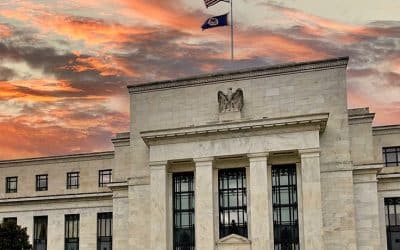Will poor business activity data translate into lower economic growth?

Redacción Mapfre
This week, composite PMI data was released for the Eurozone, offering an indicator of companies' outlook and confidence, raising concerns as the figures point to a slowdown in private sector activity. This publication “shows some weakness,” but is not a cause for concern as it is consistent with the general economic context, according to Alberto Matellán, General Manager of La Financière Responsable, an ESG investment subsidiary of MAPFRE.
The executive explained this Wednesday that the PMI “is only a survey and is greatly affected by the context in terms of confidence.” He also warned that “one of the biggest risks to the economy is a drop in confidence,” which is one of the consequences of trade disputes. That's why the decline in this indicator “comes as no surprise.”
In Spain, the PMI has been more negative in terms of the services sector, which Matellán considers “bad news”, but that “in itself does not compromise the fact that Spain remains one of the countries that is experiencing most growth in Europe.” The lack of confidence shown can be reversed; however, should it persist, it would end up leading to lower investment and therefore lower growth.
The European Central Bank meets this week, and the market consensus is already calling for a 25 basis point interest rate cut. From there, a further rate cut is likely, and the cuts will then stop, predicts Alberto Matellán, who believes a more expansionary monetary policy in Europe would not be reasonable because, even if inflation has been brought under control, it still poses a risk, and because fiscal policy is already taking a clearly expansionary tone.
With regard to the fluctuations surrounding the tariffs employed by the US administration, the economist believes that “this political game is beginning to tire the market,” and that, in the face of events such as this Wednesday's call between Trump and Xi Jinping, “we should not depend on this but on matters of substance.” "All this instability only serves to create uncertainty and greater distrust," he added.
Before learning about employment data in the US, Matellán recalled that the labor market situation tends to be in line with the macroeconomic situation, although “always a little behind.” And the US economy is “relatively stable,” weakening “slightly”. The negative impact that tariff policy had on growth expectations is not translating into employment “because of how sudden it was.” According to the executive, new employment data will help to respond to the extent to which this impact will be translated, and predicts that it will weaken only “slightly,” because the US economy is resisting “quite well.”
Finally, as summer approaches, there is likely to be a drop in the volume of trading on the stock markets, increasing the risk of volatility; nonetheless, Matellán predicts that, in Europe, increases will be maintained because what contributed to them, the comparative advantage in relation to uncertainty in the US, remains.



